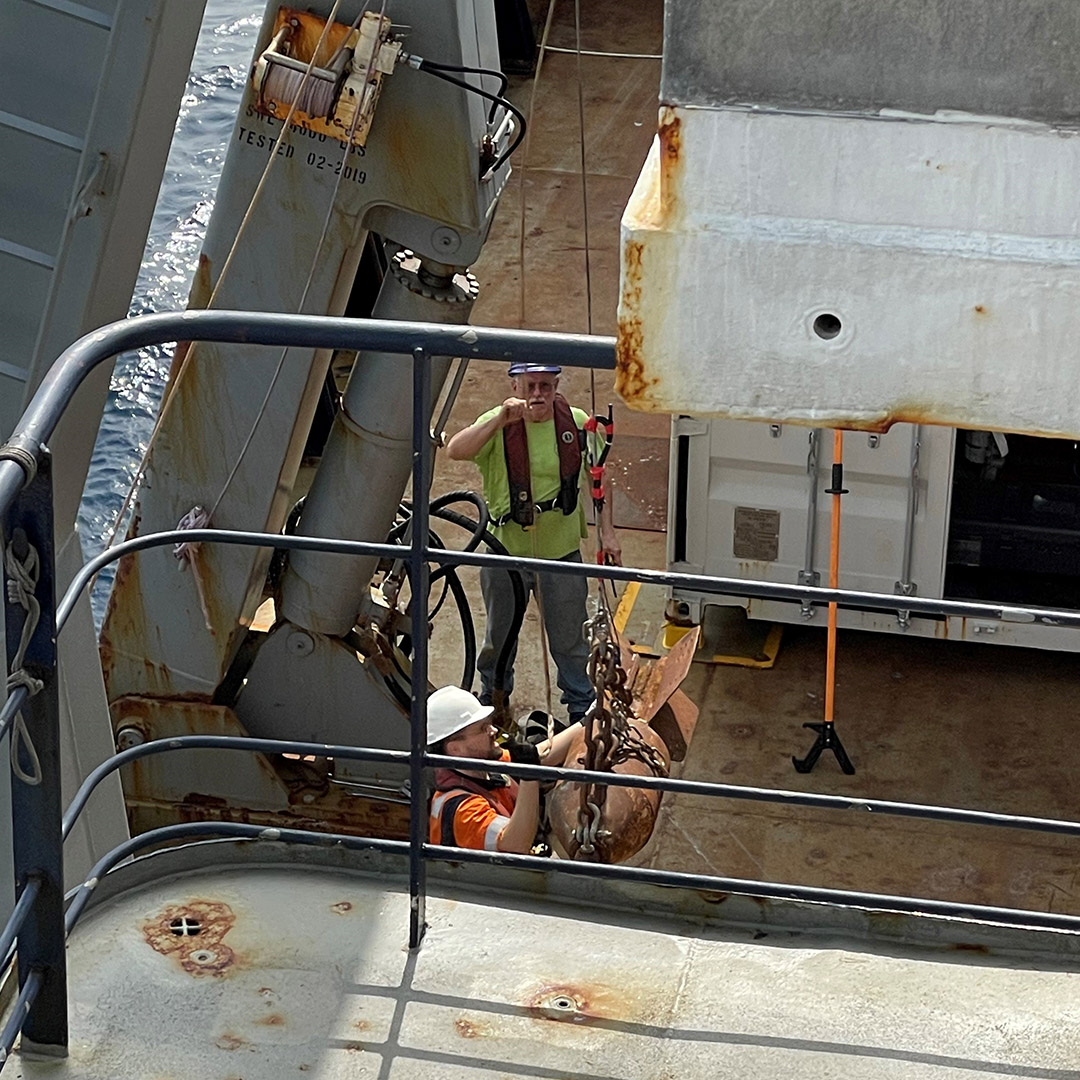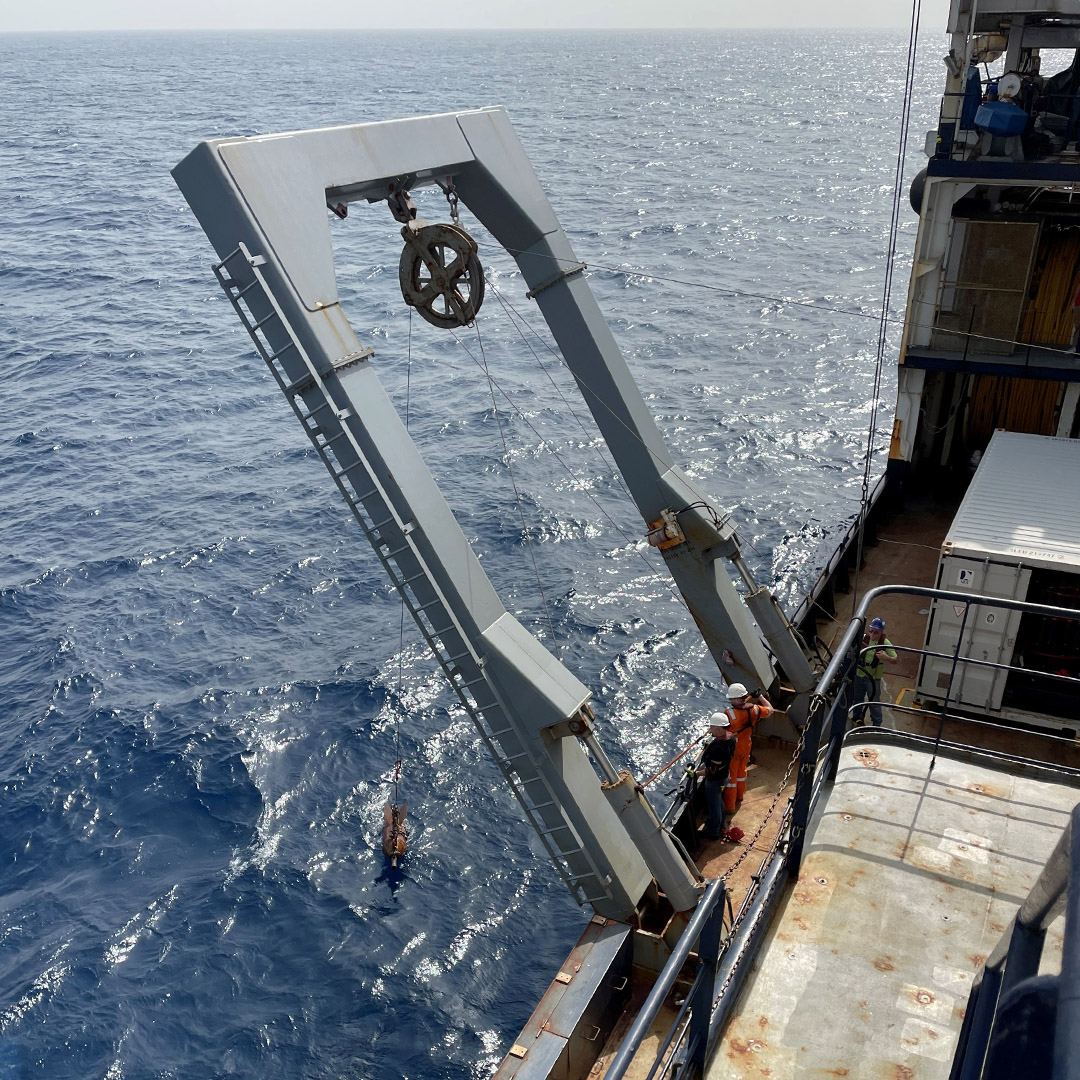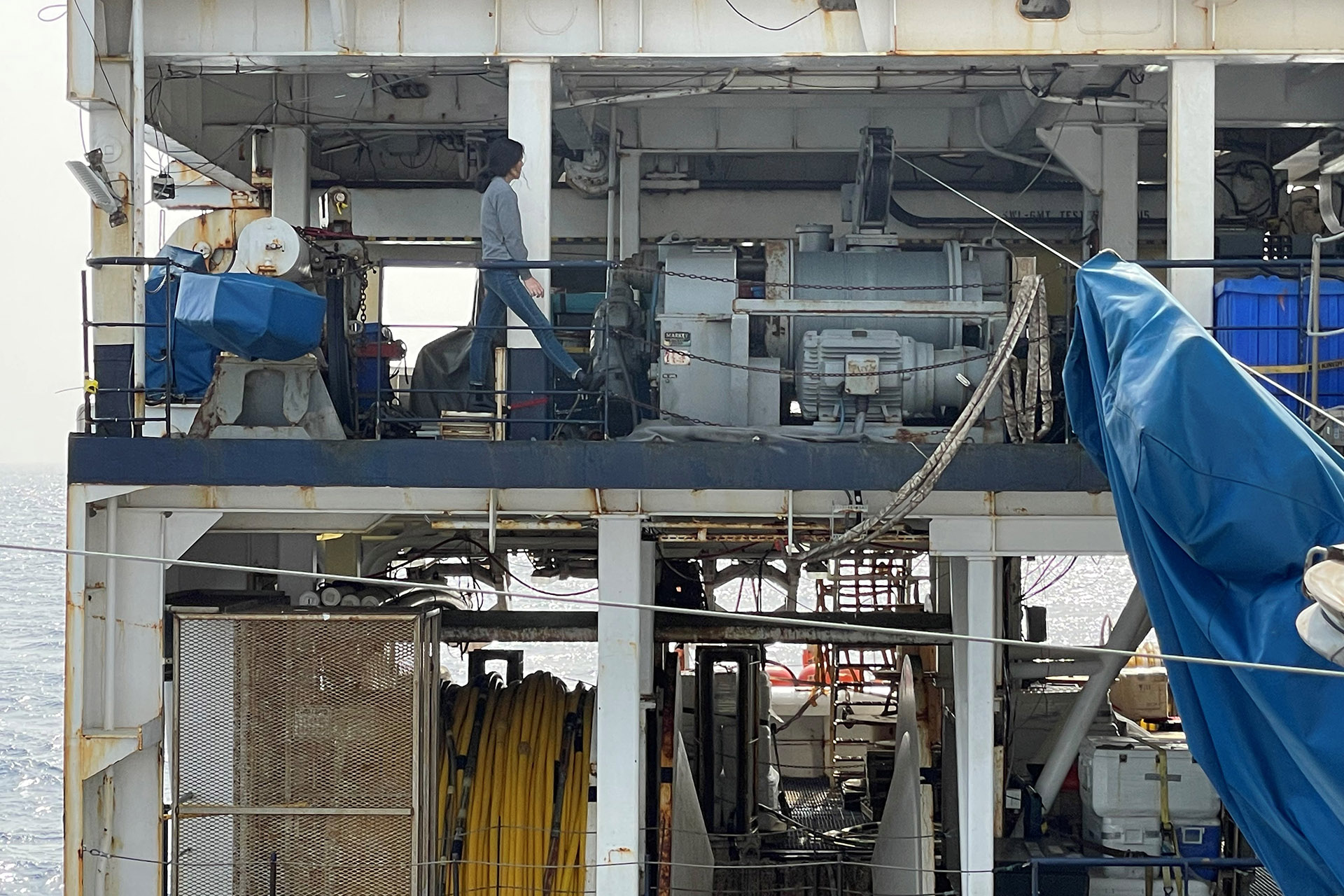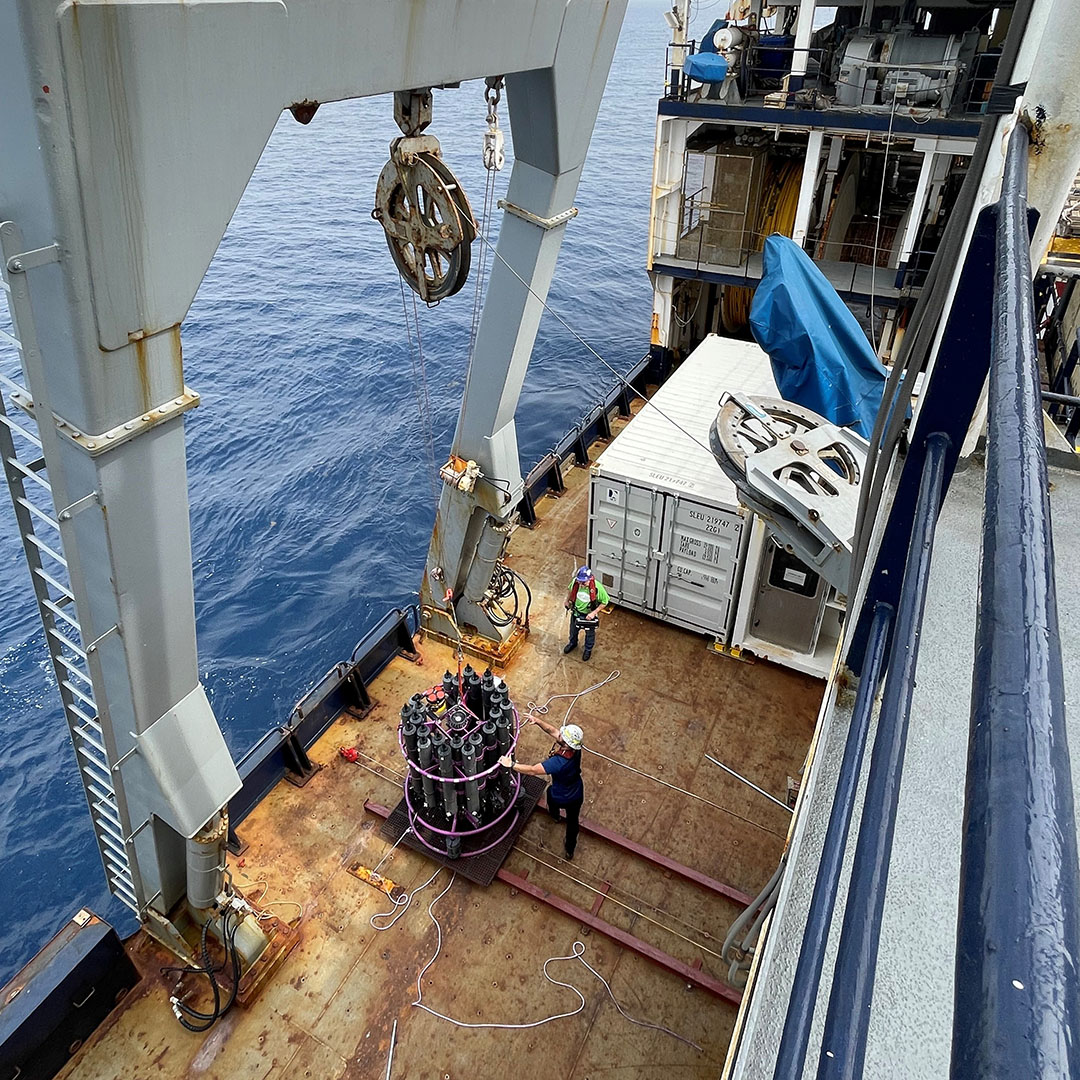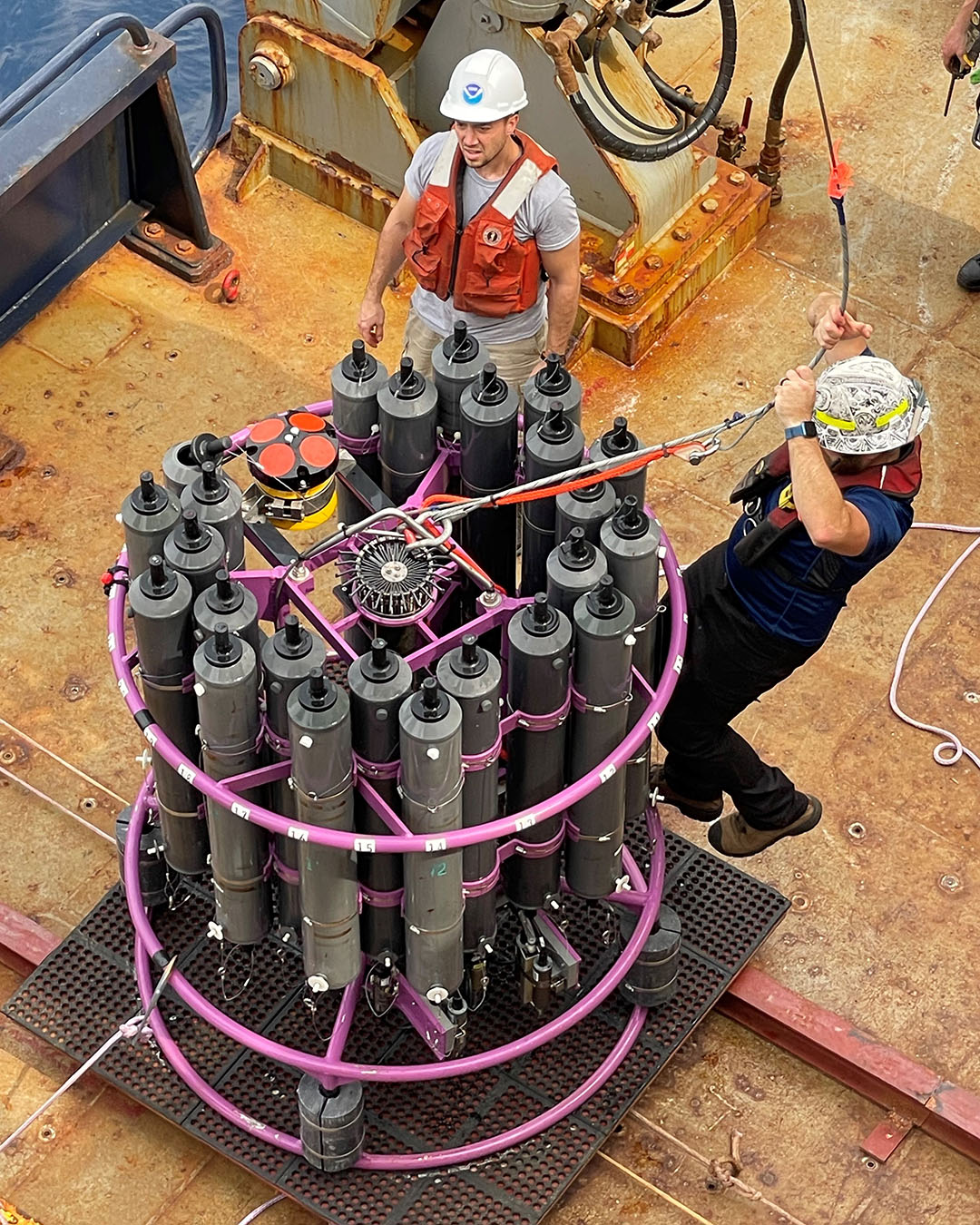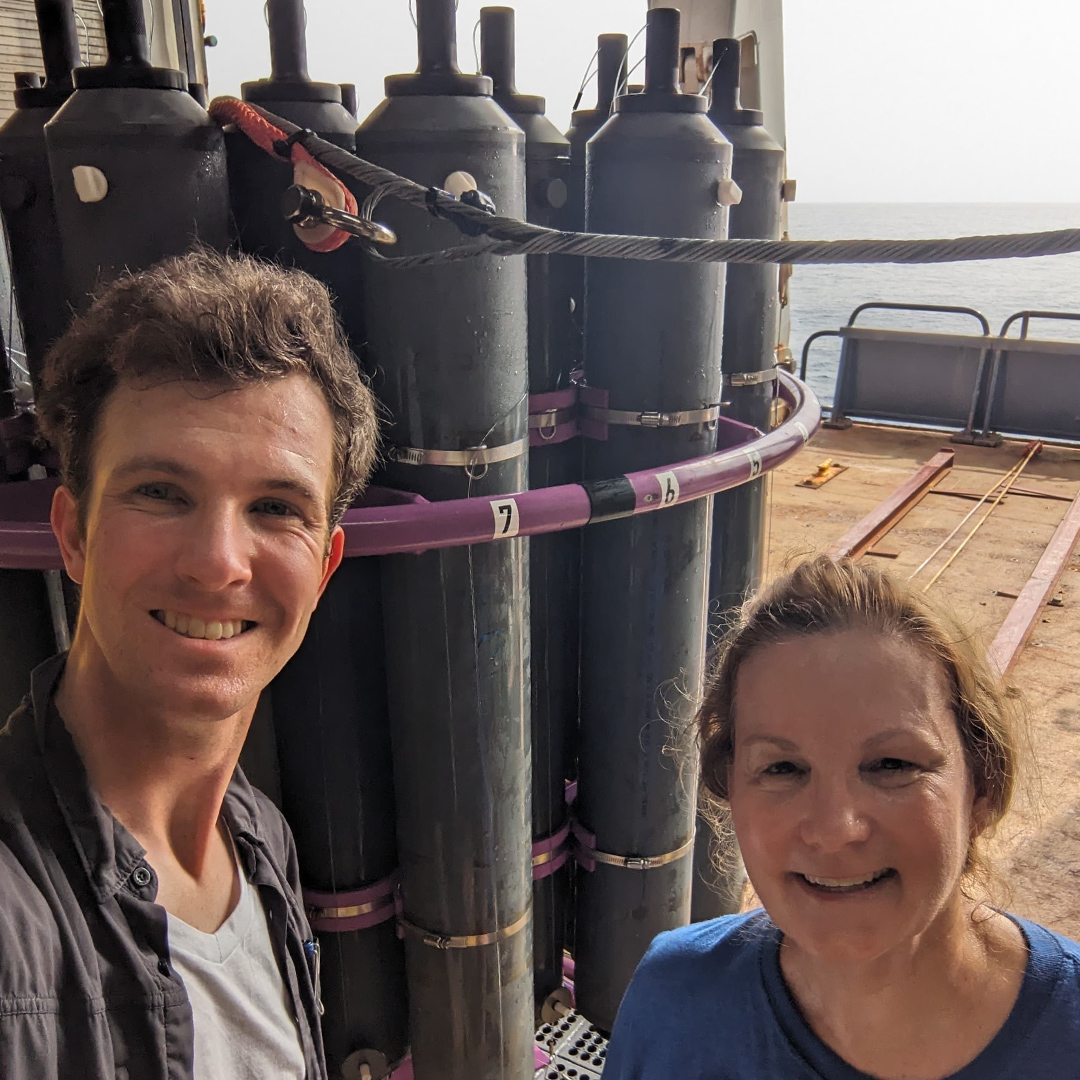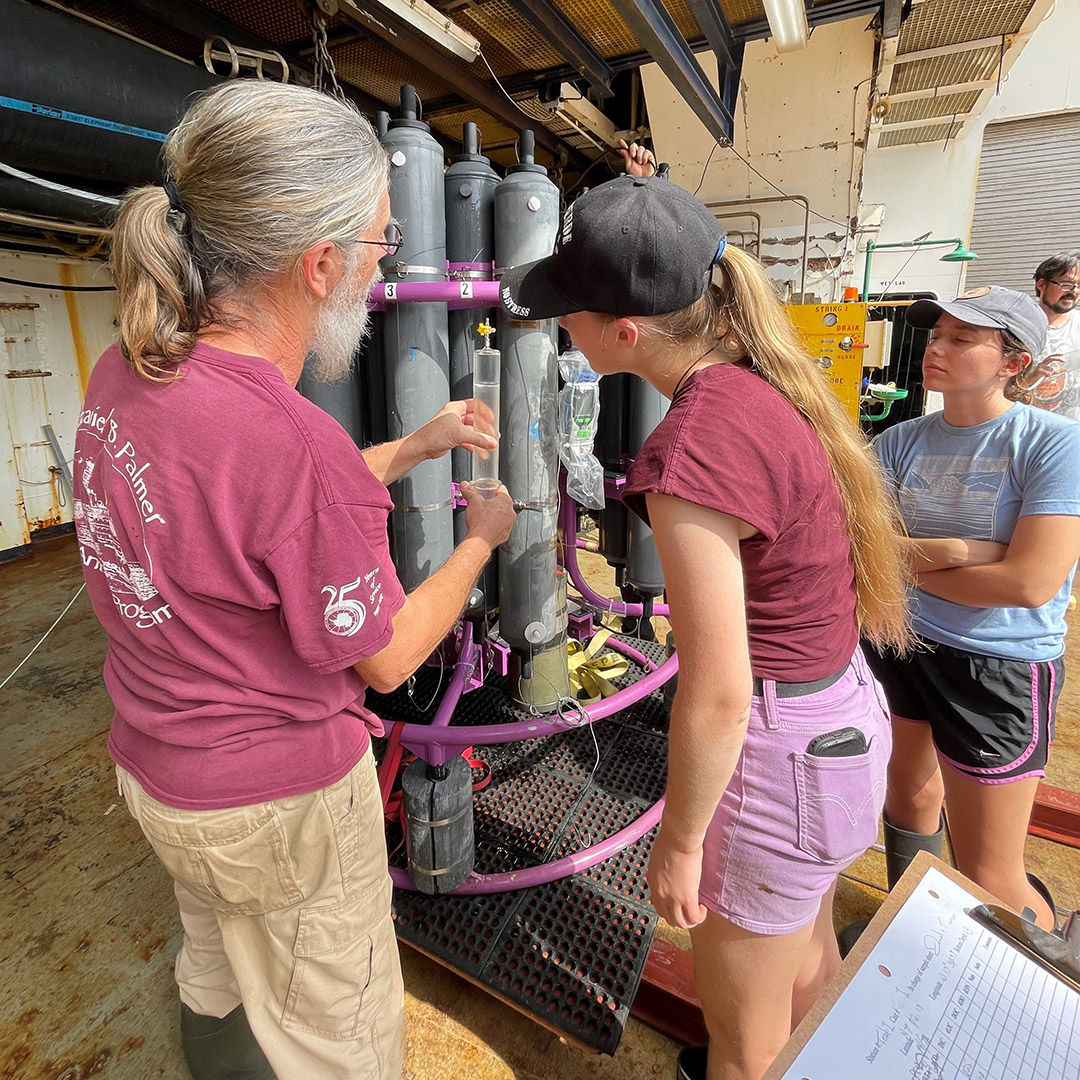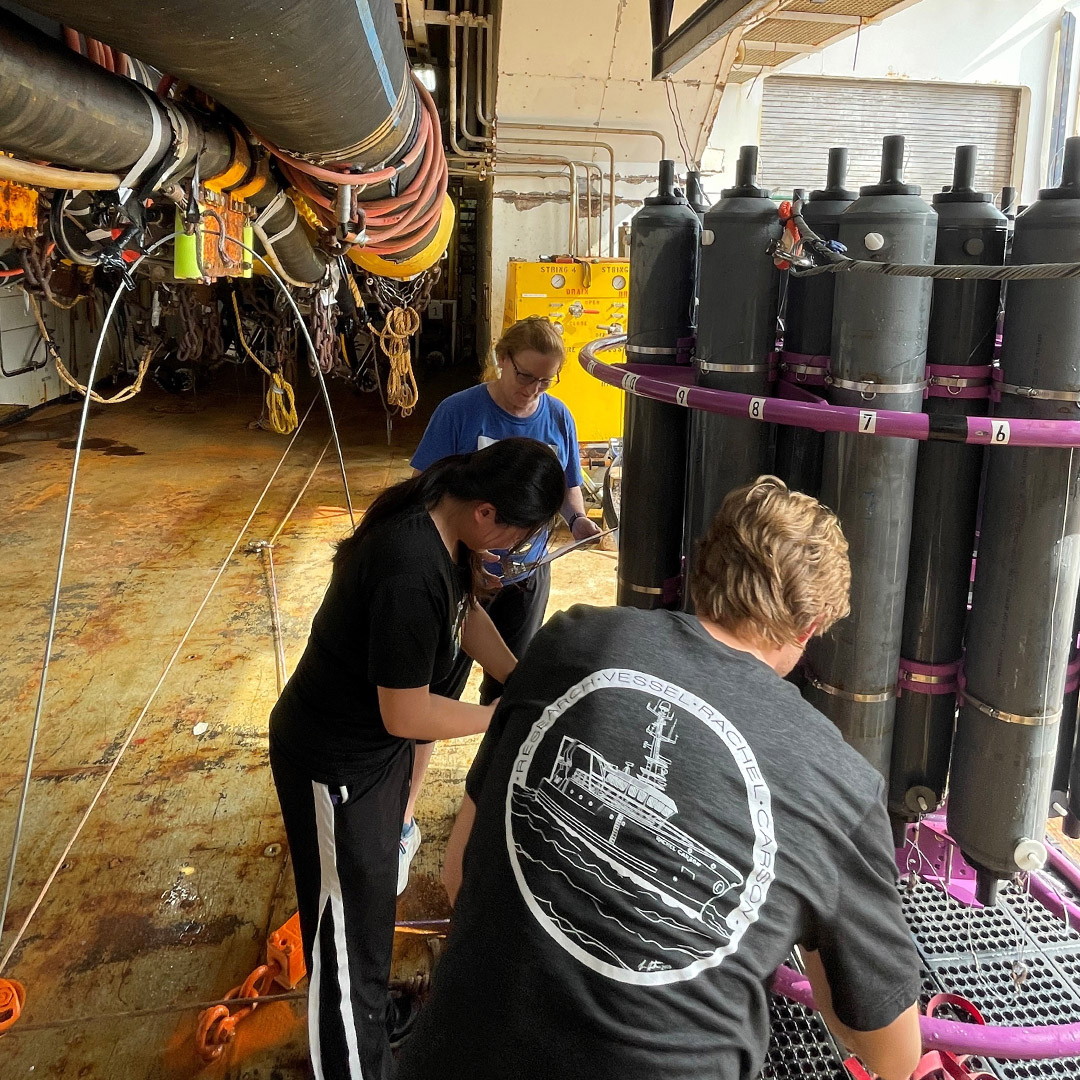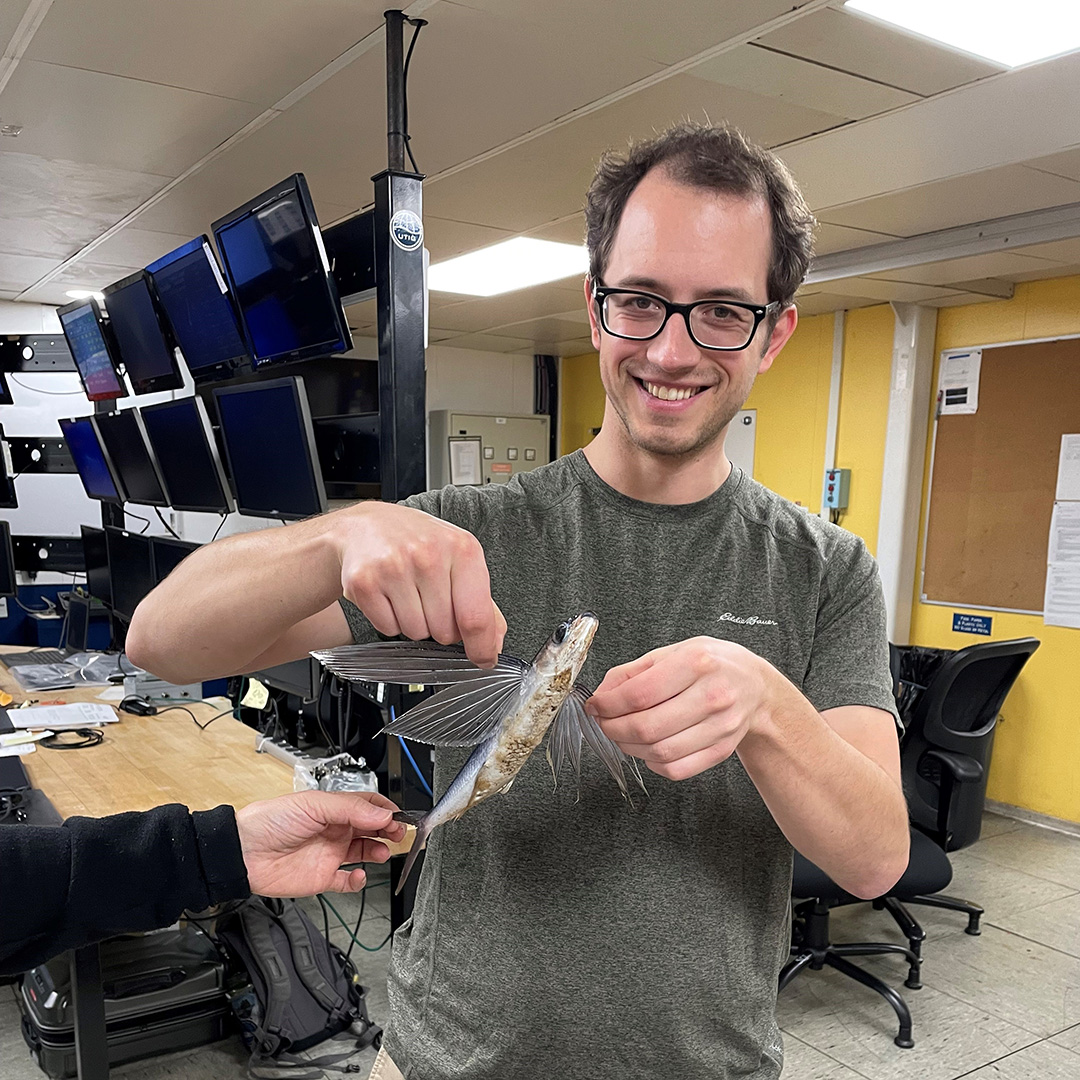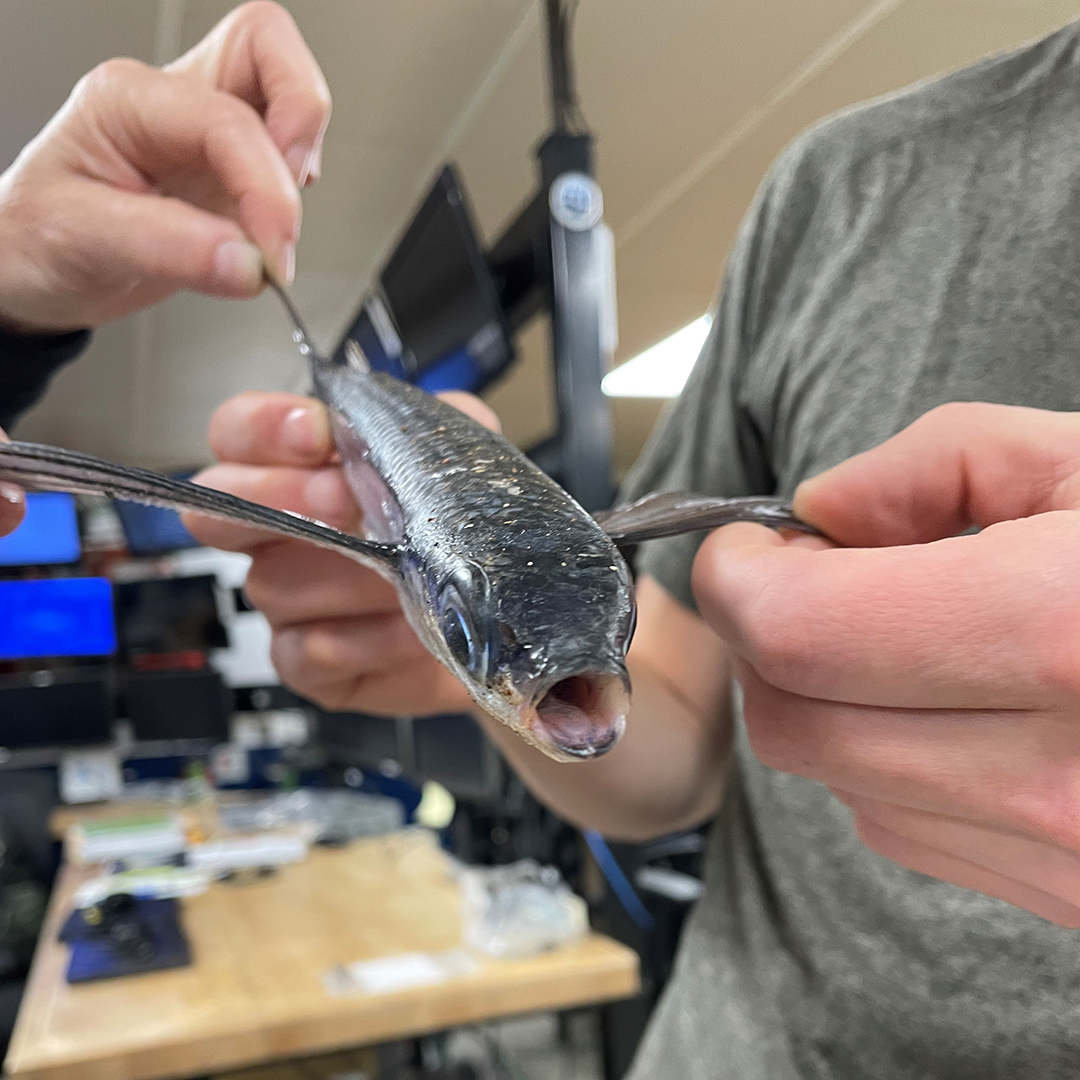GO-SHIP A13.5 Transit Collaborations
7 February 2024
We are one week into the cruise! One of the most eye-opening experiences for me so far has been witnessing the close collaboration between the science team and the Langseth crew, who have been meticulously planning for successful CTD (Conductivity, Temperature, and Depth) rosette deployments. After four stops to conduct various tasks during our transit to station 1, we are ready to begin CTD operations tomorrow!
Our first stop occurred during day two. A gap had been detected in the winch wire, which could potentially cause the wire to degrade during future use, especially under the strain of deploying heavy equipment like a CTD rosette. This could affect data transmission through the cable, compromising our measurements, and in extreme scenarios, could even result in damage to the structural integrity of the cable itself. If the winch wire were to snap during a profile, it could result in the loss of the CTD rosette, a very costly piece of equipment to lose and the backbone of the whole expedition. However, even more importantly, a snapped winch wire could be seriously dangerous if it recoiled back, under high tension and velocity, into the working area on deck where both crew and science team members may be working.
To address this issue, the science team and the ship crew collaborated to remove the miswrap from the winch wire. A heavy and very strange looking weight was connected to the end of the cable while they slowly spooled it out. At a depth of 4227 meters, the gap was successfully resolved, and the team carefully rolled the cable back up.
After respooling the winch wire onto the winch drum, paying close attention to maintain proper tension and alignment, it was now deemed ready for future CTD deployments! The calm manner that the ship crew and the science team worked together to resolve this potentially dangerous situation was impressive. Soon we heard the engines roaring and we continued our transit to station 1.
Todd Jensvold, Chief Lamont-Doherty Earth Observatory (LDEO) Marine Science Technician and Aaron Martin, LDEO Marine Science Technician, attach a torpedo weight to the winch wire for tension control.
The CTD rosette was lowered to a depth of 1000 m and Niskin bottles on the rosette triggered closed to gather water samples. After the CTD was brought back up on deck, and safely secured into place, the fun began as each team gathered around the rosette to obtain their water samples. Daniel Sandborn and I are responsible for making sure that samplers are matching the correct sample bottle number for each group to the right Niskin of water and keeping the sampling process moving. We will also be collaborating on sampling salinity, seawater stable isotopes, and isotopes of Nitrate and Nitrite.
Some of the team members gathering their water samples from the Niskin bottles are shown below.
Close up of flying fish. Learn more about these cool creatures here.
Check back in with us as we will have more exciting news to share soon!
Teresa Kennedy, CTD Watchstander, 2/1/2024
University of Texas at Tyler; University of Rhode Island
All pictures by Teresa Kennedy (UT Tyler; URI) unless otherwise noted.

